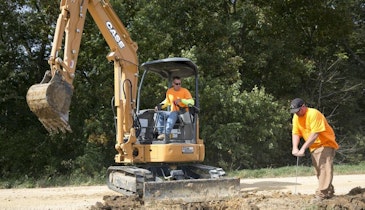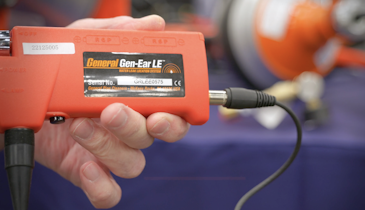Onsite system for limited-access site
Problem: Onsite system installer Nature Works had a challenging project in a small Virginia community in an environmentally sensitive area. “It’s a repair of a failed conventional, aerobic system that was put in 12 to 15 years ago,” says Michael Burch of Nature Works. “It’s a challenging site with limited access, very high-water table, and no place to put excavated dirt.”
Solution: Two 10,000-gallon EQ tanks were installed in front of the treatment tanks housing a MicroFAST 4.5 4,500-gpd unit that is a scaled-up version of the company’s NSF/ANSI Standard 40, Class 1 and 245 certified units; along with two NitriFAST 4.5 units, an ABC-N 3.0 anoxic biological clarifier denitrification device for additional nitrogen reduction, and a secondary MicroFAST 3.0 added for re-aeration. The BioMicrobics MicroFAST and the two NitriFAST units’ legs were bolted to the bottom in each of their precast tanks with an internal waterproof coating. The tanks also have an anti-floatation curb on the bottom. Conseal was added on each FAST flange, which comes in contact with the top half of the tank lids. The ABC-N 4.5 completes the treatment units in the tanks to add extra denitrification.
Result: The units have performed as expected, reducing nitrogen and enabling future growth potential for the community. 800-753-3278;
www.biomicrobics.com.
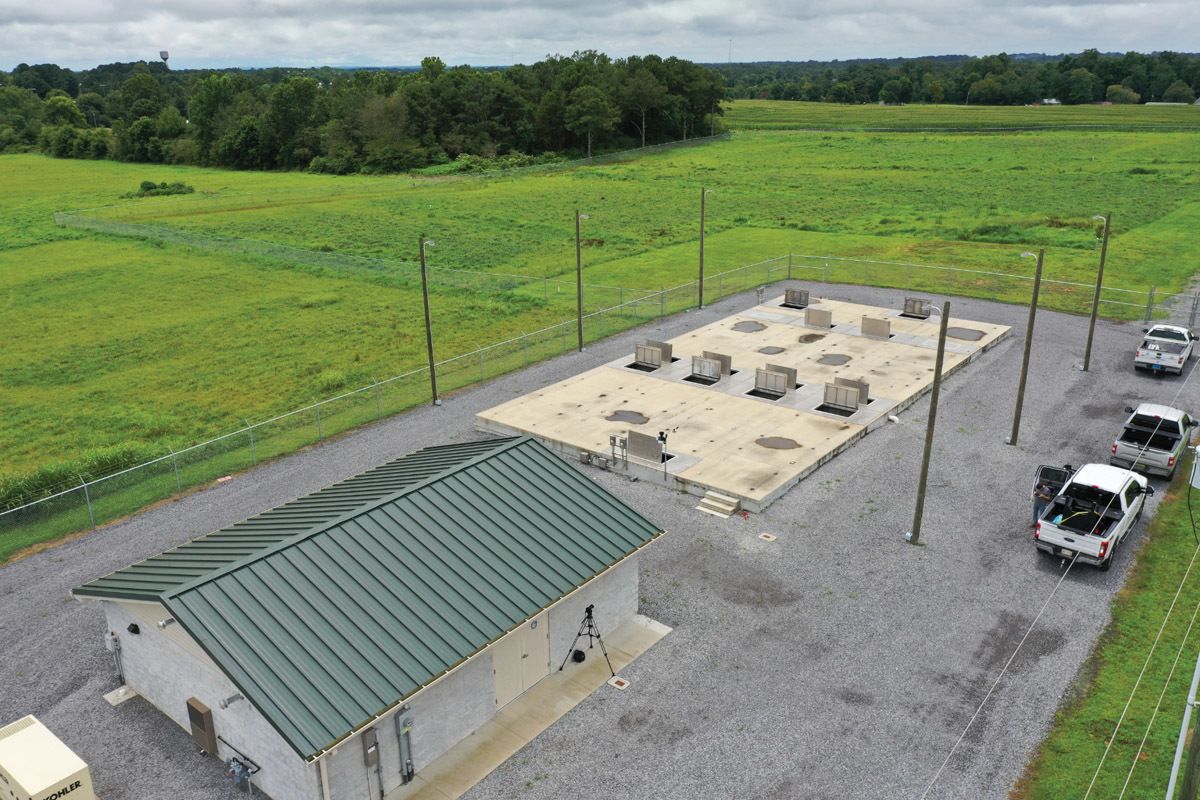
Package treatment plant enables expansion and reduces maintenance at RV park
Problem: Yogi Bear’s Jellystone Park in Waller, Texas, is a full-service campground and recreation center featuring cabins, tent sites, RV camping, swimming pools, a lazy river and two food service venues. The park’s existing sewage treatment system had been expanded many times and was again at capacity, restricting park service expansion and requiring costly and time-consuming maintenance. The design engineer was tasked with designing a new system that could handle the wastewater flow of 30,000 gpd and meet Texas Commission of Environmental Quality standards.
Solution: A Delta Treatment Systems Package Treatment Plant was selected that processes wastewater via an extended aeration and oxidation process that purifies the sewage using naturally occurring bacteria to destroy the organic compounds. Continued mixing with air feeds the biological organisms, which consume the volatile materials and convert them into water and inert solids. The result is a clear and odor-free effluent that meets TCEQ permit requirements. The custom package plant is installed upon an engineered, reinforced concrete structural slab. The plant has dual aeration basins, sludge holding tanks, blowers and pumps, and a single 10-foot-diameter mechanical clarifier with skimmers and a clarifier bridge. A separate pump tank was incorporated into the design.
Result: The custom-designed plant was built at the factory and shipped to the project site as a self-contained unit and required little assembly. It continues to perform as expected. 800-219-9183; www.deltatreatment.com.
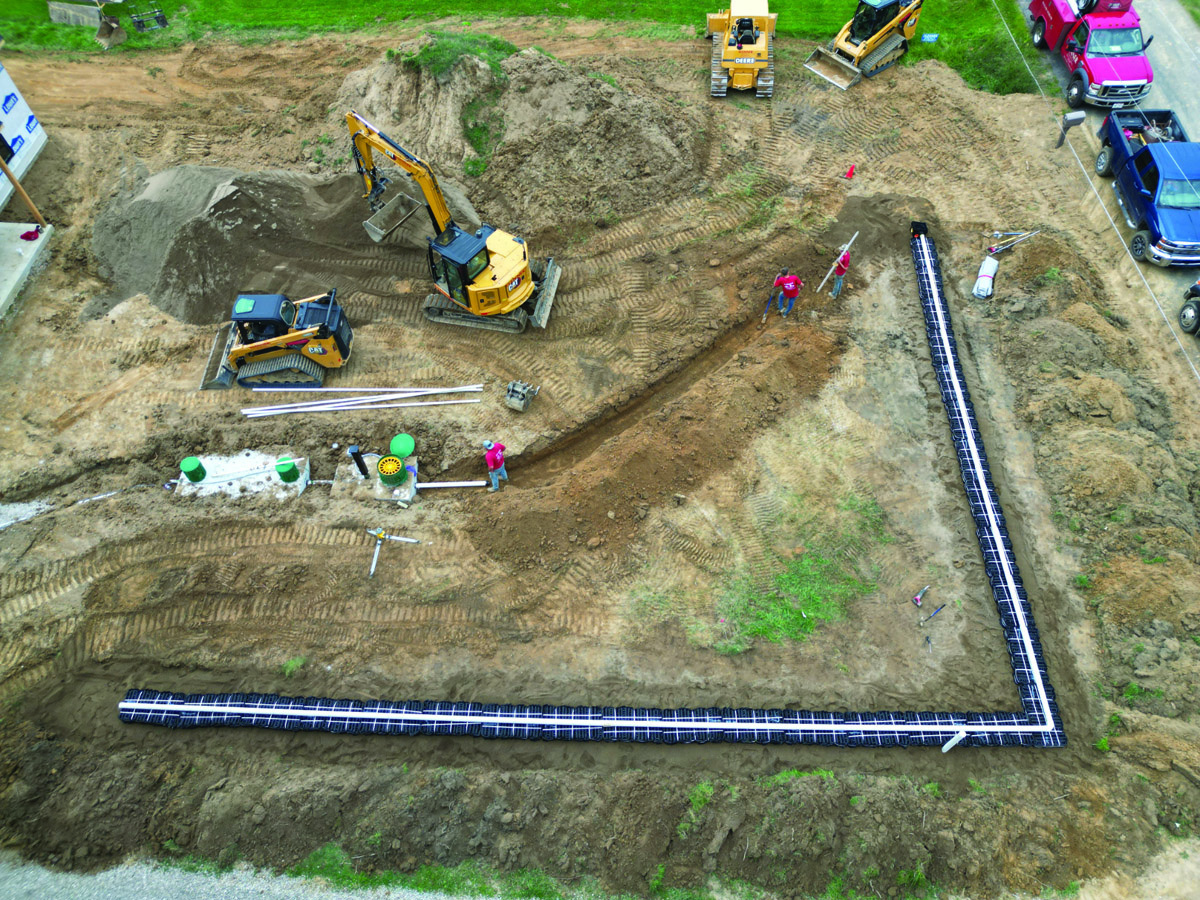
Treatment system fits on lakeside lot with small footprint
Problem: Homeowners in North Carolina were designing their dream home on a lakeside lot. A traditional system could not fit in the available area, and a 50-foot setback was needed from the lake.
Solution: An Eljen GSF System was designed for the three-bedroom home. The product’s approval gets a setback reduction due to meeting NSF 40 secondary treatment standards, and its flexible design options were able to contour around the new
construction in the available space. Don Gaddy Septic installed the 38 Eljen GSF A42 modules in a trench configuration. One lateral had to be contoured using standard fittings around the home to meet the setbacks from the waterfront and the home’s foundation. The system is pressurized, dosed at 67.5 gallons per dose, to promote equal distribution to the laterals.
Result: The homeowners were able to move into their new home. The system provides advanced treatment and was able to be installed in the available space while protecting the lake for years to come. 800-444-1359; www.eljen.com.
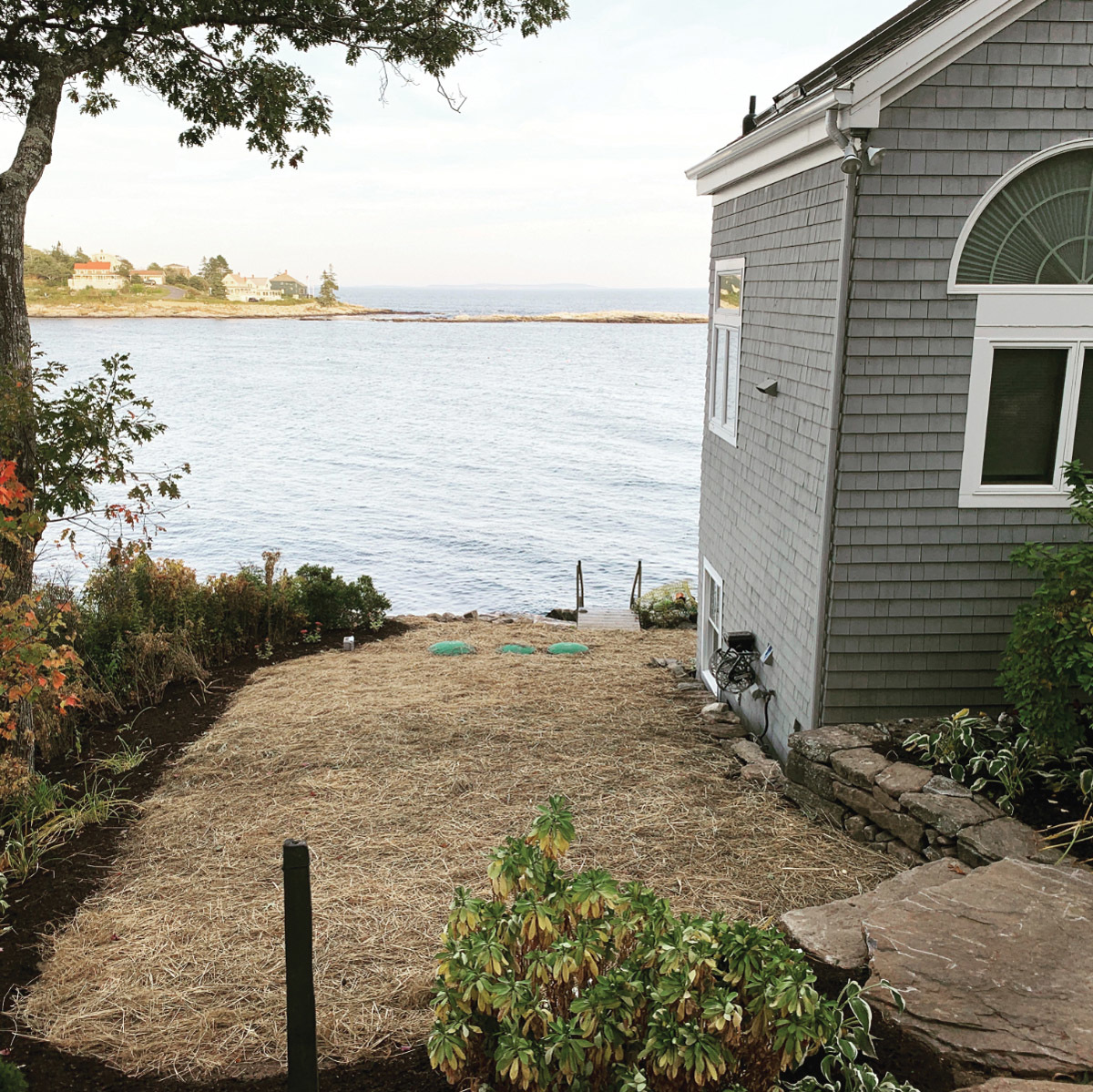
Replacing an overboard discharge on a microscopic site
Problem: Matt Page LSE, of Maine Septic Solution was charged with squeezing an onsite treatment system onto a tight, difficult site, while ensuring functionality and preserving the aesthetic of an ocean property on the Maine coast. The lot was 7,000 square feet, with 34 feet to the owner’s well, and 53 feet to the neighbor’s well. The system needed to fit in a footprint of 10 by 28 feet.
Solution: The Fuji Clean Model CEN7, design capacity 700 gpd, was utilized. It offers one-tank treatment with a tiny footprint and low profile (99 by 57 by 73 inches).
Result: At-grade access ports do not hinder the view. Its quiet blower (<50 dB) is in sync with serene surroundings, while the lightweight tank (705 pounds) was easy to maneuver into location. One simple 3/4-inch air line hookup minimizes excavation requirements. 207-406-2927; www.fujicleanusa.com.
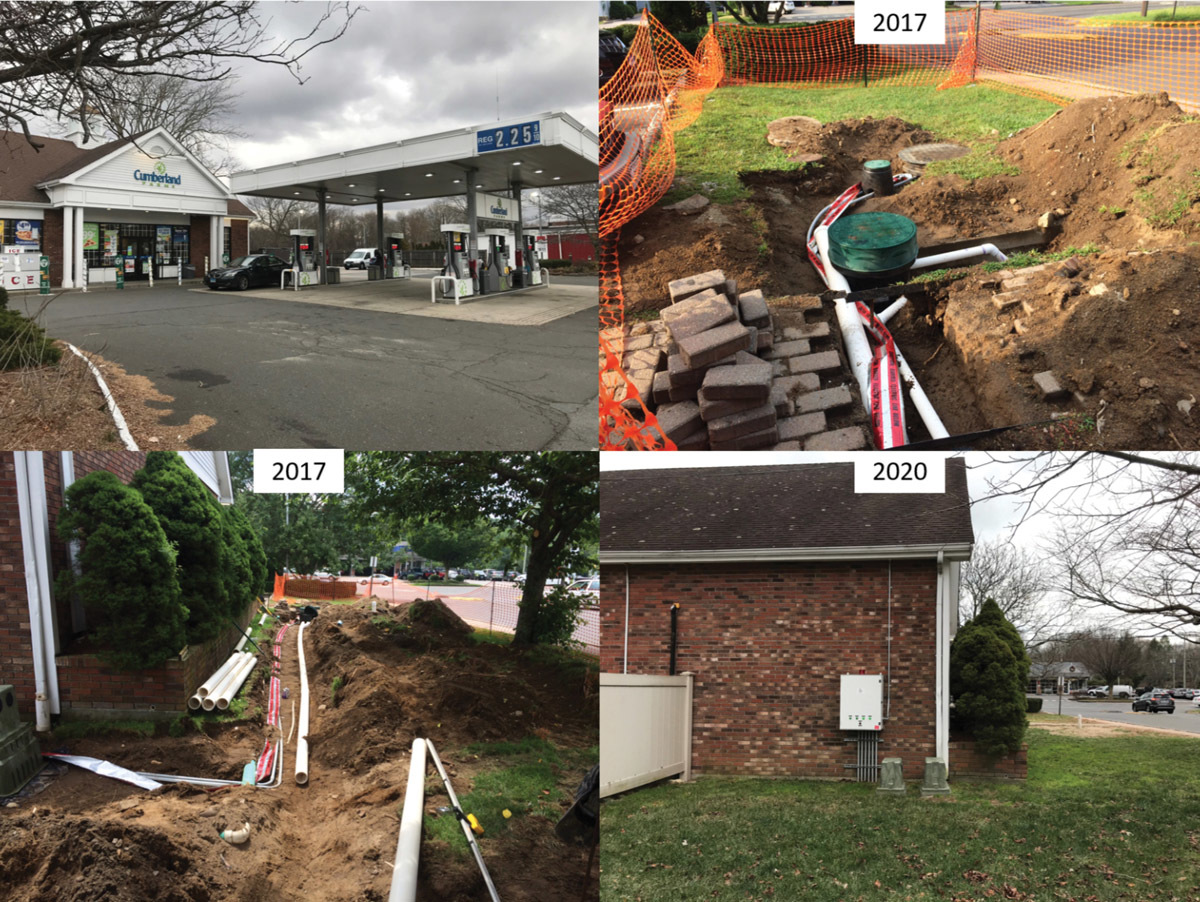
System eliminates biomat clogging issue
Problem: A Connecticut convenience store had long dealt with failures in its leachfield receiving high-strength wastewater. The existing system contained a septic tank, grease trap and two concrete chamber leachfields. Both had experienced failures within 12 years of installation and required frequent pump-outs.
Solution: In 2017, Geomatrix was engaged to investigate. Analysis determined the failures were due to high-strength wastewater biomat clogging. A SoilAir system was installed to rejuvenate the existing chambers and handle the future high-strength wastewater flows. This solution eliminated the need to excavate, repair or replace the existing chamber systems which were intertwined with the fuel dispensers, piping, tanks and parking, all directly in front of the store. The direct and indirect costs of disturbing the fuel system would have been many times the cost of the septic system. Construction took less than a week, and store traffic was unaffected.
Result: For three years, the system has operated utilizing less than 50% of the leaching system. Geomatrix continues to remotely monitor the system through a logic-based control system that can react to issues before they become problems. 860-510-0730; www.geomatrixsystems.com.
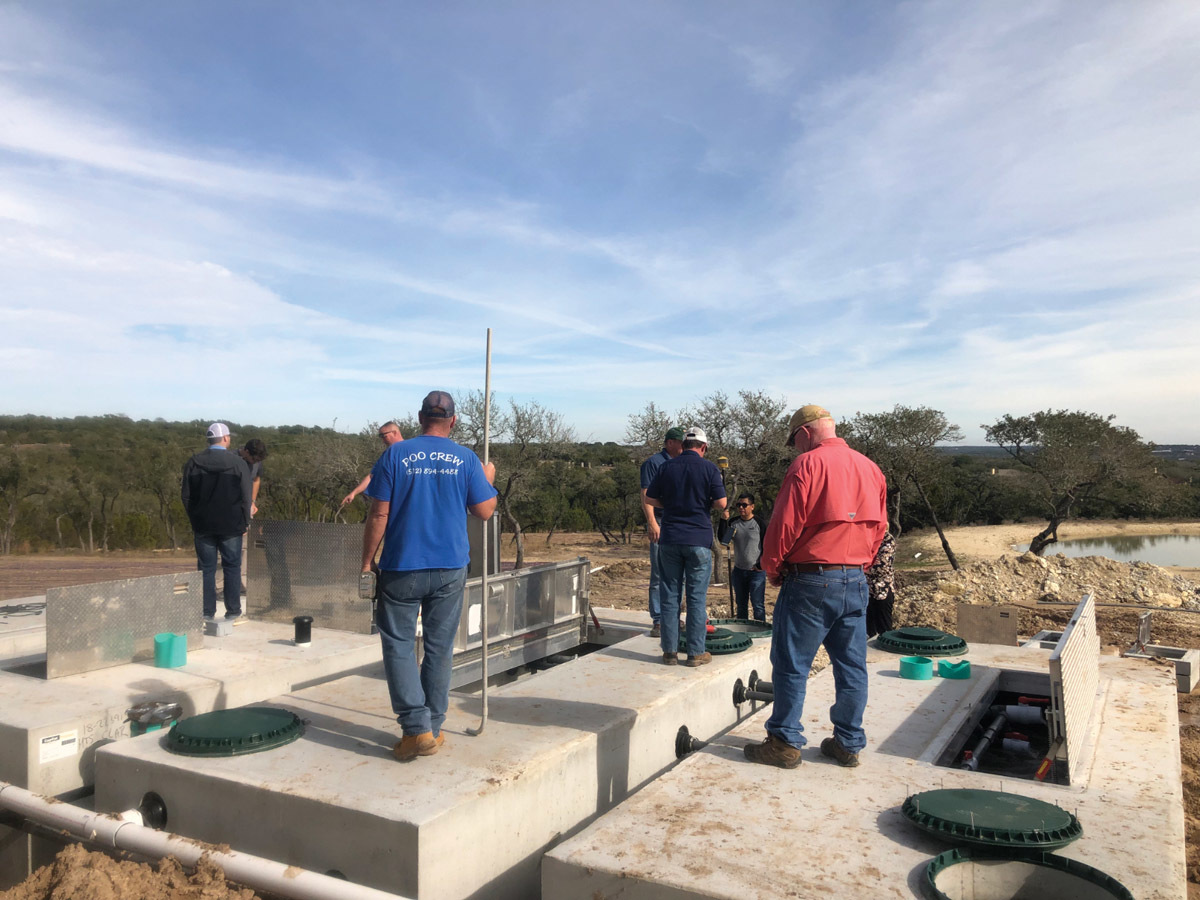
Treatment system used to moderate flow within limits
Problem: Registered sanitarian Jon Maass of JMI OSSF Consulting was contracted to help with a challenging mixed-use site of a 300-plus-people office complex, culinary training facility with corporate housing/condos for trainees in Dripping Springs, Texas. When all the uses of the property were added up, they were looking at 5,400-gpd flow on weekdays, with just the condos on the weekends at 2,700 gpd. In Texas, systems discharging more than 5,000 gpd aren’t permitted at the local level under TAC 285. State permits can take up to a year to obtain and at much greater expense in both equipment and permit/design fees, and this site was well under construction and expected to be occupied within six months.
Solution: Working with the sanitarian, Hoot Systems devised a plan to provide additional flow equalization and stack the excess waste generated Monday through Friday, adding this to the weekend flows to utilize the whole week’s capacity limits. The flows from the condos were residential strength, however the office building and training kitchen generate higher strength waste. This combined flow required a 12,500-gpd MTS treatment system to properly treat the waste stream.
Result: Technicians from Hill Country Wastewater were able to get the system installed on budget and in time for the grand opening and are the current operators. The daily flow to the drainfield has kept at or below 4,800 gpd and is in compliance with the TAC 285. 888-878-4668;
www.hootsystems.com.
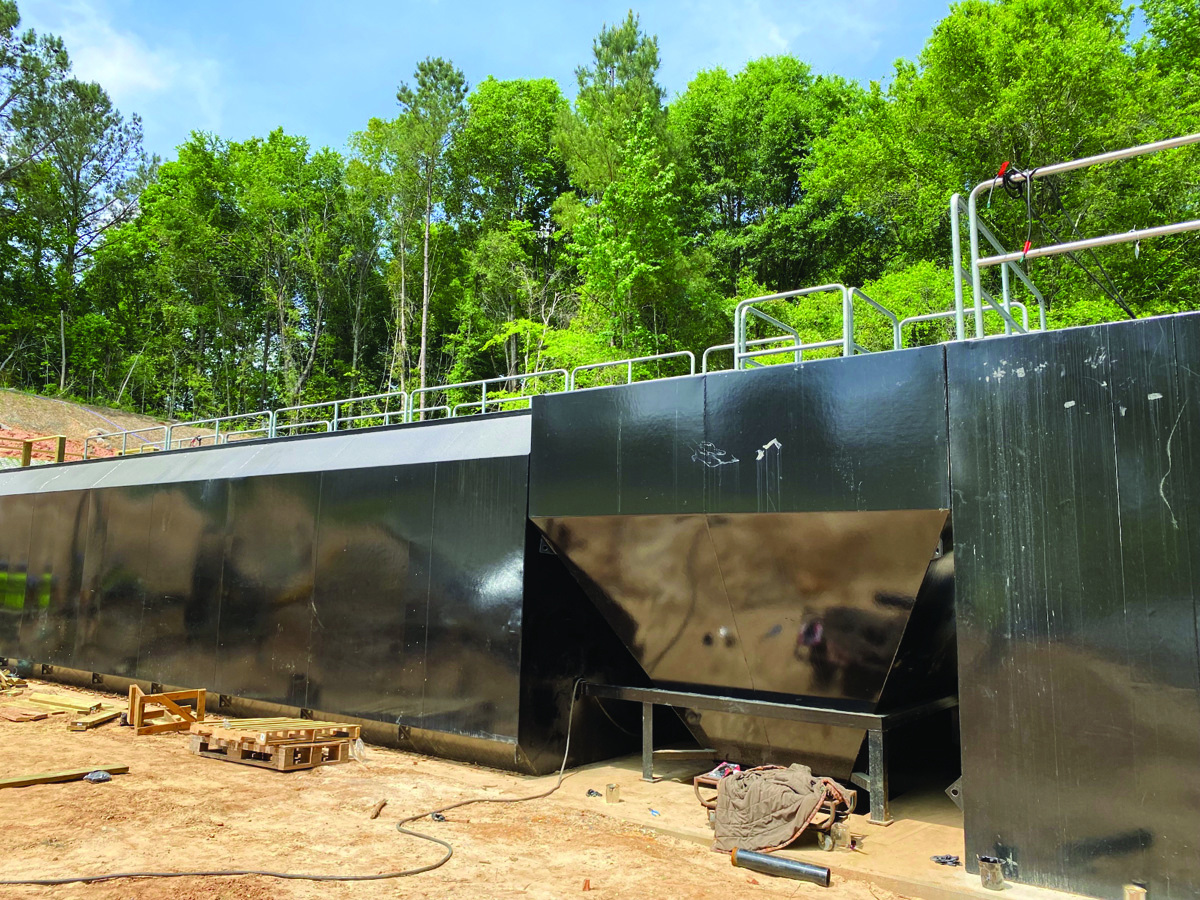
Advanced Treatment Leachfield solves limited site challenges
Problem: Homeowners in St. Joseph County, Indiana, had a failing septic system requiring a replacement, but site limitations and regulations limited available options. Due to limited space for a new system and soil spoils, regulations prohibited using conventional trenches. Additionally, an extremely steep brick paver driveway made the use of heavy equipment risky and potentially damaging.
Solution: An Advanced Treatment Leachfield (ATL) system from Infiltrator Water Technologies was selected. Because the ATL system treats effluent to NSF 40 levels, the system engineer could reduce the required footprint. St. Joseph County had recently approved the use of the ATL and the system engineer, Stuart Meade, was certified on design, installation and inspection of a system to be certified by the manufacturer. To accomplish this, the county provided training meetings for sanitarians and the installer, Dervin Witmer of Dig-It Excavating.
Result: Without the system size reduction made possible by using of the ATL system, there were no other approved options for the homeowners. The installer welcomed the challenges presented by the site and the ability to provide a new solution to the homeowners. 800-221-4436; www.infiltratorwater.com.
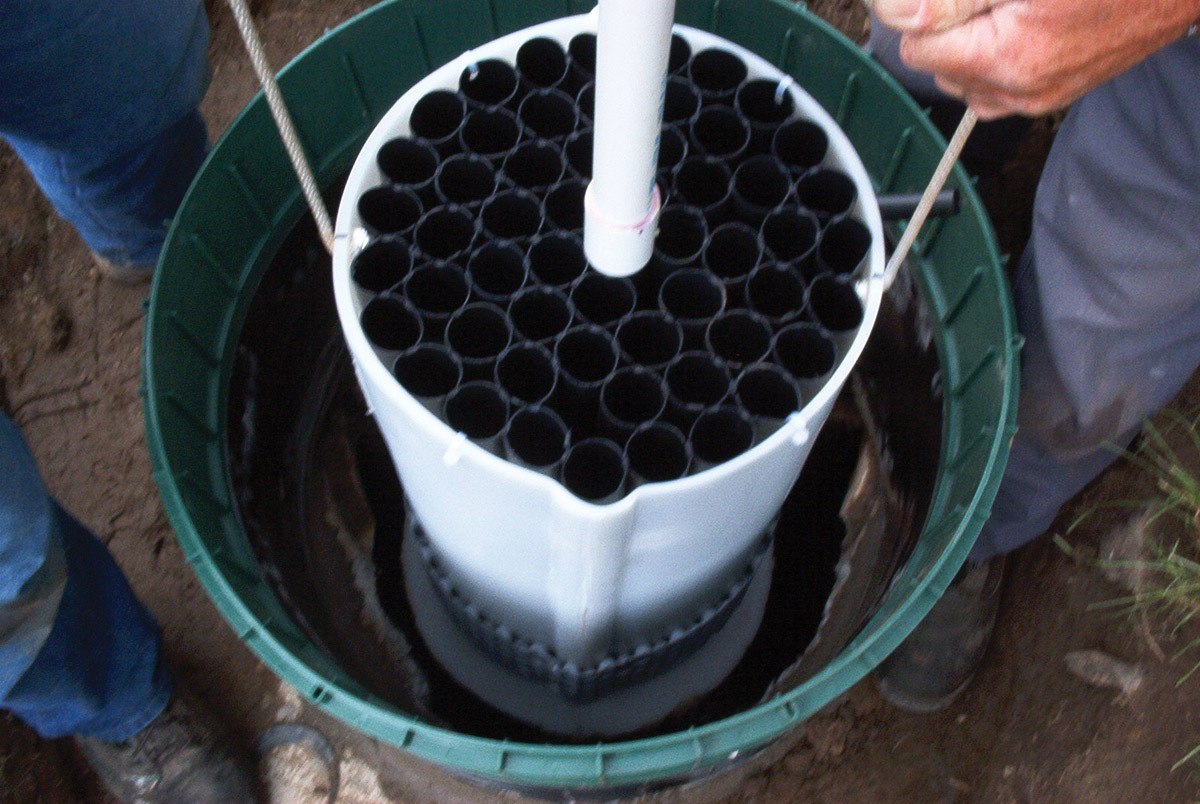
Pretreatment system used for high FOG wastewater
Problem: The Cottage Hotel is a historic tavern and restaurant sitting at the center of town in Mendon, New York. The one-third acre parcel presents major challenges for a septic system, as space at the site is mostly limited to the footprint of the buildings and parking. Wastewater is treated and then discharged into a nearby stream. Pretreatment had historically been accomplished through an aerobic treatment unit with polishing through a single pass sand filter with SPDES-permitted surface discharge. Although the ATU and sand filter are good treatment technologies, at this particular site, the fats, oils and greases generated from the kitchen waste were too much for the system to handle causing the Sand Filter to routinely become clogged. Regulatory authorities mandated that the failing system be upgraded to that which would be better suited for handling the high strength of commercial wastewater.
Solution: The owner hired Onsite Engineering PLLC to design a commercial septic system that could handle the high strength restaurant wastewater — and treat it to the high level needed for a permitted surface water discharge. The redesigned system uses the White Knight Microbial Inoculator Generator from Knight Treatment Systems. The system inoculates and pretreats the wastewater with select bacteria that aggressively digest the FOG and other organic constituents prior to passing through the rebuilt single pass sand filter.
Result: The system has been working well since its 2017 installation. 800-560-2454; www.knighttreatment.com.
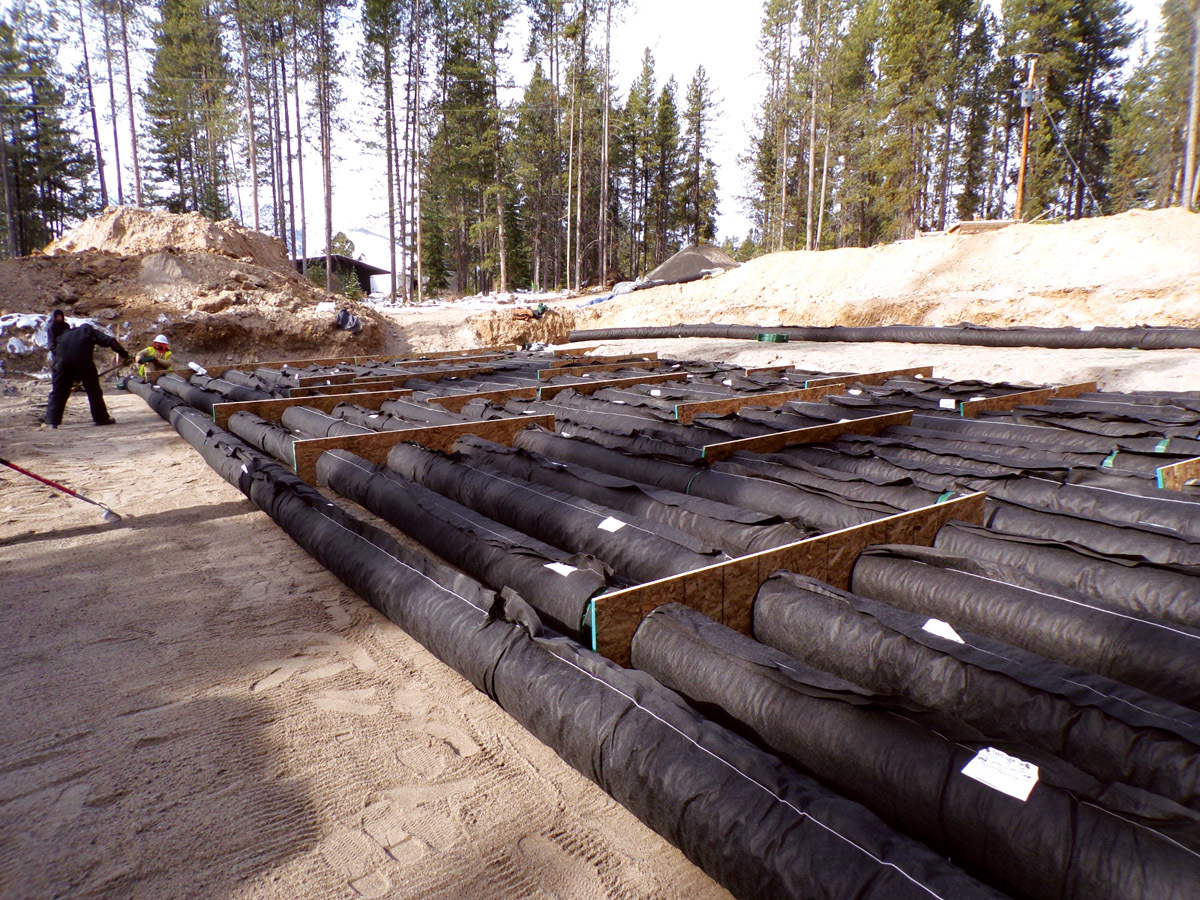
National park service research station uses combined treatment and dispersal system to protect sensitive environment
Problem: An upgrade of the existing, inadequate potable water and onsite sanitary sewer system was required to serve the existing lodge, houses and cabins at the University of Wyoming’s AMK Ranch research center. The center is adjacent to Jackson Lake in Grand Teton National Park and is owned by the U.S. National Park Service’s Grand Teton National Park. The new wastewater treatment system design had to comply with all federal wastewater regulations for national parks and had to preserve the pristine Jackson Lake environment. Additionally, the solution had to be compatible with the extreme cold and frost depths prevalent in area winters.
Solution: A 6,500-gpd combined treatment and dispersal Advanced Enviro-Septic (AES) treatment system from Presby Environmental with 3,120 linear feet of AES pipe was specified because it removes up to 99% of wastewater contaminants without using electricity or replacement media. The depth of allowable cover over the system was a contributing factor in the selection of the system given the extreme winter conditions. Construction of the new system could only begin once the AMK Ranch was closed for the season and it needed to be completely operational for the 2020 season.
Result: Materials were delivered by Ferguson Water Works, which provided the AES pipe. The small footprint of the passive AES system as compared to conventional wastewater treatment systems resulted in minimal impact and disturbance of the site during installation.
800-473-5298; www.presbyeco.com.





